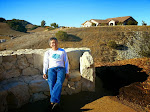We may need a
complete redesign of the developmental math program in US two-year colleges.
My campus currently
uses a placement test (Mathematics Diagnostic Test Project) to determine if
students are ready for transfer level courses (math for elementary school
teachers, stats, trig, precalculus, calculus)
or what remedial course (arithmetic, prealgebra, elementary algebra,
intermediate algebra) they should take.
But the Common Core State Standards for mathematics will have high school students studying
mathematics organized in a fashion that does not align with our existing math
courses.
California is one of
the 45 states that have formally adopted the CCSS for mathematics, and I am on
a recently appointed state committee whose charge is to align California’s math
standards (a.k.a. the California Framework) with the CCSS.
One of the main
reasons that I applied to be on the Mathematics Curriculum Framework and Evaluation Criteria Committee (MCFCC) was to better familiarize myself with
what is to be taught in California's K-12 schools. (Another reason was to lose myself in
abbreviations: SBE for State Board of
Education, CDE for California Department of Education, IQC for Instructional
Quality Commission, the body that forwarded my name to the SBE for approval to
serve on the MFCC to align the CF with the CCSS.)
The CCSS specify a
consensus of what math is required for students to be college or career
ready. The standards are grouped into
six conceptual categories: Number and
Quantity, Algebra, Functions, Modeling, Geometry, and Statistics and
Probability. (There are separately eight
standards for mathematical practice that go across all grade levels.)
The CCSS differ
significantly from what is typically required for graduation in most American
high schools today. For example, the
treatment of statistics and probability includes not only descriptive
statistics but also conditional probability, inference, decisions based on
probability, and rules of
probability.
The CCSS include not
only right-triangle trigonometry but also trig functions of a real variable, to
be used in modeling periodic behavior.
Thus trig spans the geometry, algebra, and function categories.
The CCSS gives math
standards for high school without specifying courses or order of topics. But evidently the introduction of functions
includes an emphasis on (linear and) exponential functions with domains restricted
to a subset of the integers--sequences are explicitly studied as functions.
California community
colleges do not require a high school diploma for admission. A student who masters the first CCSS high
school math course will already have compared exponential functions with linear
functions and solved equations both algebraically and graphically. The student
will have had explicit instruction on descriptive statistics. The student may have worked with
constructions and transformations in the plane and proved simple geometric
theorems algebraically but not yet worked with polynomials (and specifically
not with quadratic functions or quadratic equations).
How will our
placement system advise this student?
One of the
recommendations of California's Student SuccessTask Force is for better alignment between high school and college
curricula. With the CCSS adopted across
states, it looks as if most community colleges will need to make adjustments to
their way of placing and educating their math students.

